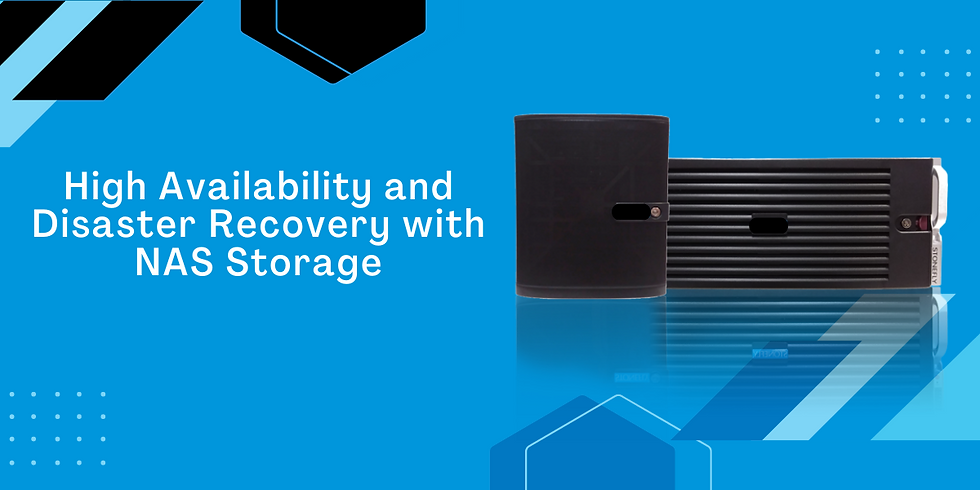High Availability and Disaster Recovery with NAS Storage
- Scale out nas
- Apr 20, 2023
- 3 min read
In today’s business world, data is the driving force behind every company. As such, the availability and reliability of this data have become paramount. With the increasing need for data storage, network-attached storage (NAS) has become a popular solution due to its cost-effectiveness, scalability, and reliability. In this post, we will explore high availability and disaster recovery with NAS storage and why it is so crucial.

What is High availability with NAS Storage?
High availability is crucial when considering the storage of important data. With NAS storage, high availability is accomplished through the use of redundant systems or components. This means that if one component fails, there is another that can take over its function, ensuring that the data remains available. Furthermore, high availability can be achieved through clustering. A cluster is a group of NAS solutions devices that are linked together and act as a single unit. If one unit fails, another can take over its function, ensuring that the data remains accessible.
What is Disaster Recovery with NAS Storage?
Disaster recovery is the ability to recover data after a catastrophic event, such as a fire or flood. It involves having a backup of the data that is stored separately from the main storage unit. In the event of a disaster, the backup can be used to restore the data to a new system. There are several types of backups that can be made, including full backups, incremental backups, and differential backups. It is essential to choose the right backup method for your company's data storage needs.
What are the Benefits of implementing High availability and Disaster recovery?
There are several benefits to implementing high availability and disaster recovery with NAS storage. The first is increased uptime, as the redundant systems ensure that the data remains accessible even in the event of a component failure. Secondly, there is the peace of mind that comes with knowing that data is backed up and can be recovered in case of a disaster. Finally, there is the ability to scale up or down as needed, making NAS storage a very cost-effective solution.
What are the Best Practices for Implementing High availability and Disaster recovery with NAS Storage?
The first step in implementing high availability and disaster recovery with NAS storage is to understand your company's data storage needs. This involves determining the amount of data storage required, the types of data that need to be stored, and the level of redundancy required. Once you have established your company's data storage requirements, you can begin to choose the appropriate NAS storage solution. Additionally, you should have a thorough backup strategy that includes regular backups of all data. This will help ensure that in the event of a disaster, data can be recovered quickly and efficiently.
Conclusion:
In conclusion, high availability and disaster recovery with NAS storage are critical components of any company's data storage strategy. They provide increased uptime and peace of mind, and are a cost-effective solution to data storage needs. By understanding your company's data storage requirements and implementing the appropriate backup strategies, you can ensure that your data remains secure and readily accessible. So, whether you are a small business or a large enterprise, NAS storage is an excellent solution to meet all your data storage needs! To Know more Contact Us.



Comments